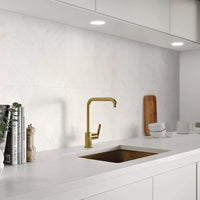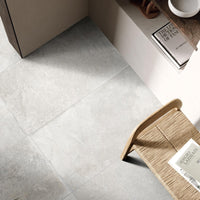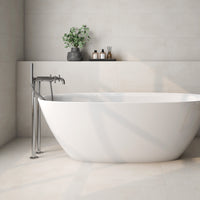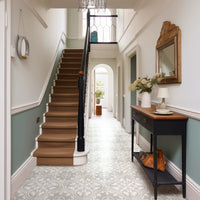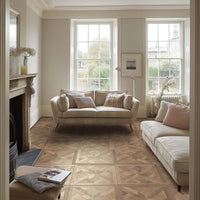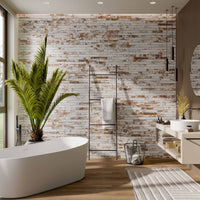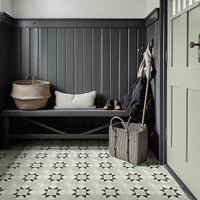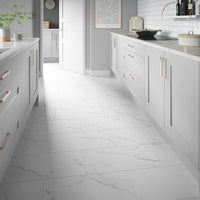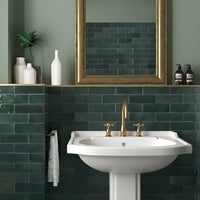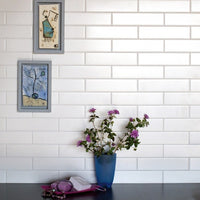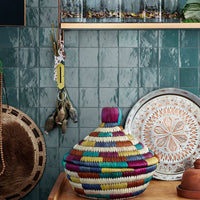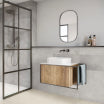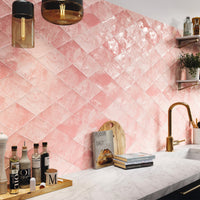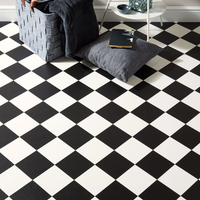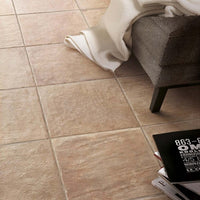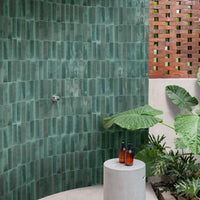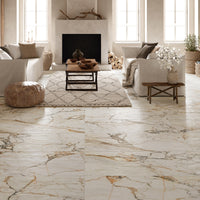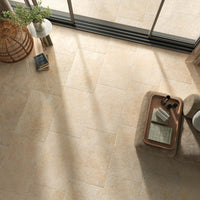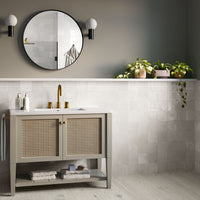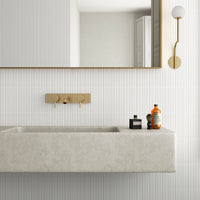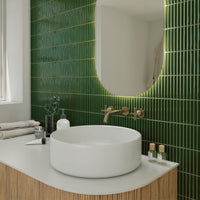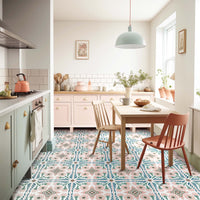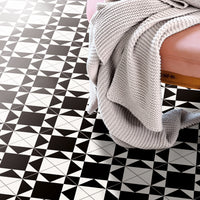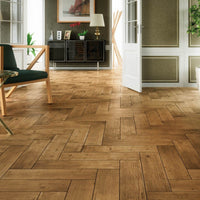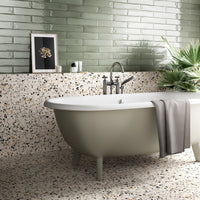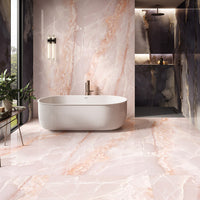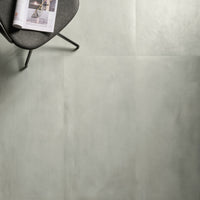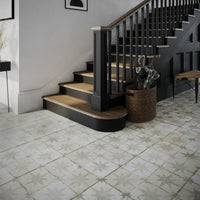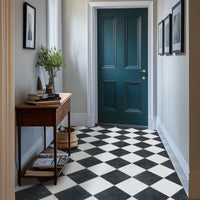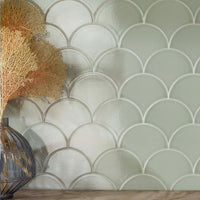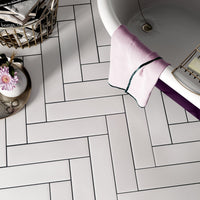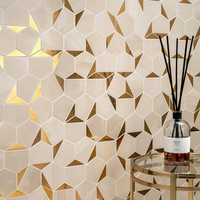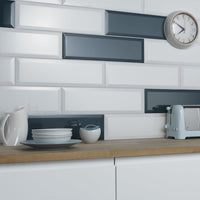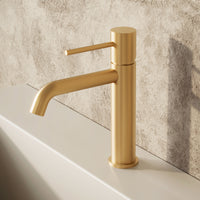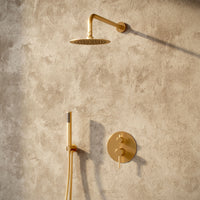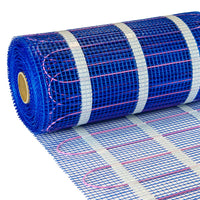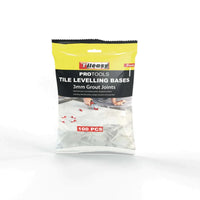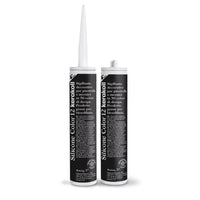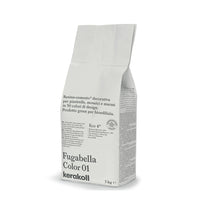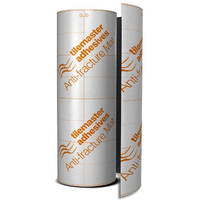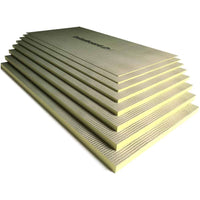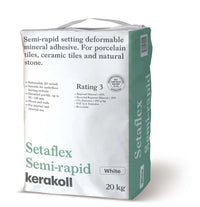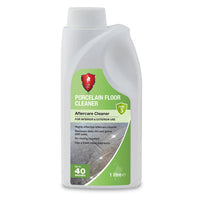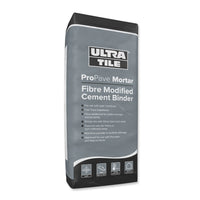It’s easy to see why polished tiles are so popular – with their sleek surfaces they offer a high-end designer look that’s usually the domain of the rich and famous.
Yet it’s easy to forget that not so long ago, unless you were prepared to fork our a fortune on natural marble you’d have to make do with sad-looking glossy tiles that quickly lost their sheen. Thankfully times have changed and these days, everyone can enjoy the luxurious finish of polished porcelain tiles for a fraction of the cost of real marble.
So if you’re in the market for these gorgeous tiles, read on. We’ll cover what you need to know so that when you’re ready to buy, you’re well informed and make the choice that’s right for you.
What are polished tiles?
Polished tiles are exactly what they say on the tin – tiles with a highly polished finish that’s achieved by grinding the surface of the tile with a diamond disk.
When people refer to ‘polished porcelain’ they’re usually referring to a particular type with a relatively plain surface, but there’s actually two different types of polished porcelain tiles. It’s important to note the difference as they’re equally popular:
What style do polished tiles come in?
By their very nature, unglazed tiles tend to be extremely minimal and perfect for today’s contemporary design schemes. They’re usually available in a solid colour, or with a very plain pattern for some extra detail.
On the other hand, glazed tiles tend to look like natural stones and there’s plenty of man-made tiles that replicate the natural character of Calacatta marble or the buttery tones of Crema Marfil. They’re usually made using digital printing lines – think of running a tile through an industrial office printer and you’ll get a basic idea.
With the latest designs, it’s almost impossible to tell the difference between polished porcelain tiles and the natural stone equivalent. Have a look below, can you tell which is made by Mother Nature and which is man made?
Low Maintenance
Because they’re made from porcelain, polished tiles are incredibly hard-wearing and resistant to wear and tear, which makes them perfect for busy areas such as hallways, kitchens and living spaces. You won’t believe how easy they are to live with, especially if you’ve had polished natural stone tiles in the past.
They should also be resistant to water and stains, although this depends on the particular tile. During the polishing stage at the factory, tiny pores appear on the surface at the tile which need to be sealed to prevent stains. If you purchase a good quality tile from a reputable retailer, it’s more than likely that the tiles have been sealed at the factory so you have nothing to worry about.
However, not all tiles are born equal so make sure to ask – if a tile seems too cheap to be true it probably hasn’t been sealed at the factory. Although you can seal tiles at home, it pays to be wary – the factory may have cut corners elsewhere too.
FYI, all polished tiles sold by us come pre-sealed at the factory, using the latest nano-sealers. These work their way down into the pores, providing a much stronger protection than standard sealers.
Where can you use polished tiles?
Kitchens, floors, walls… pretty much anywhere you’d use a normal tile!
And how about bathrooms? Well, by their very nature polished tiles are more slippery than a matt or textured tile, but as long as you take care with wet feet, there’s no reason not to lay them on a bathroom floor. And if you really like the idea of a shiny bathroom but have a nagging concern, there’s some great treatments you can easily apply at home to increase the grip underfoot.
However, for obvious reasons we’d rule out using polished tiles in an area that gets wet a lot. So no wet room floors. And please don’t use them outside – unfortunately the British Isles are known for their soggy weather!
If you’re thinking of using polished tiles in a commercial area – let’s say a bar or restaurant – we’d really recommend choosing an unglazed tile. They’re far more hard-wearing than almost any other tile which is great for peace of mind – after all, you don’t want to be replacing tiles in years to come – our Polished Porcelain range has been specified for airports and shopping centres.
If there’s a particular glazed tile you’d like to use in a commercial space, we’d always advise checking with the retailer to make sure it’s suitable.
Size matters
The latest contemporary looks are all about seamless surfaces, so polished tiles are great if you’re after this high-end style as they tend to come in larger formats. It’s a personal choice but with these tiles, we think bigger is better. 30 x 60 cm rectangles will look great on bathroom floors, but choose the 60 x 60 cm slab over larger kitchen floors for the full effect.
However, certain ranges are available in even larger sizes – 80 x 80 cm in the case of our stunning Super White. These take the concept of large-format tiles to a new level and are certain to give you the wow factor. We’d stay away from any tiles bigger than this – they’ll be difficult to install and any slight lips between tiles will be really noticeable.
A word of advice – be a little cautious if your retailer is offering you polished tiles in smaller sizes. Most factories have stopped producing anything smaller than 45 x 45 cm so they might be trying to get rid of old stock that’s out of fashion.
Don’t try this at home
We’re usually big fans of DIY and trying things out for yourself. However, when it comes to polished tiles we’d always advise calling in a pro.
All our polished tiles have ‘rectified edges’ – all four sides are mechanically cut and polished during production, so that you can lay the tiles with a small 2 mm grout gap for an ultra modern look.
However, installing rectified tiles can be tricky for the amateur tiler – they have very little tolerance so can be pretty unforgiving, especially if your substrate isn’t perfect. Better to call in an expert with plenty of experience. Just make sure they give your new tiles a thorough wash — you’ll want them to be sparkling!
You get what you pay for…
There’s a lot of substandard tiles out there, and if the price of a particular tiles seems too good to be true, it probably is. Cheap products may be susceptible to excessive ’optical hazing’ – where the surface of the tile appears smoky or hazy under certain light conditions. More expensive tiles are produced using better quality polishing disks, to ensure a smoother and more reflective finish.
We’d also pay particular attention to tiles calling themselves ‘Super White’. A pure white is impossible to achieve with a glazed tile – even the best versions such as ours are a few shades off. However, a lot of tiles that go by this name are really shades of ivory or cream. And no matter what the price is, this kind of defeats the object if you’re going for the pure, minimalistic look…
…but…
Given that we’d advised you to stay away from cheap polished tiles, you might be wondering why our ranges are priced so low?
There’s an easy answer. We buy all our tiles direct from the manufacturer, so we know where they’re coming from. And as we’re online only, we’re able to cut our overheads and pass the savings on you.
